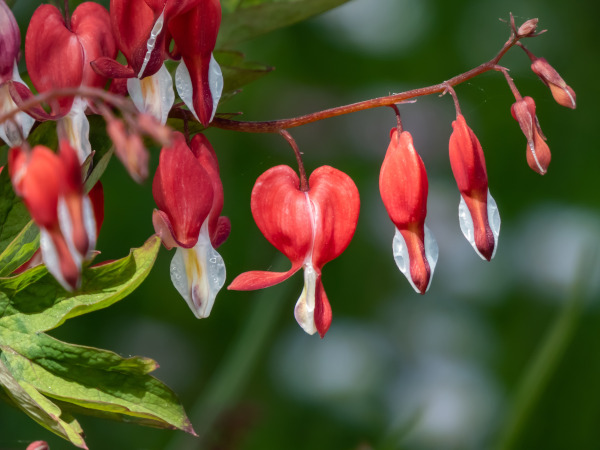How to grow Dicentra
*Note Dicentra spectabilis common name ‘Bleeding Heart’, ‘Lady in the Bath’, ‘Dutchman’s Breeches’ was renamed by taxonomists in the late 1990’s after research of subtle differences. Please see growing guide for Lamprocapnos. This document refers to the remaining Dicentra in the genus.
Dicentra are native to North America and temperate East Asia. There are 8 species within this genus of herbaceous perennial flowering plants with unique heart shaped flowers. In Dicentra, all leaves are in a basal rosette, and flowers are on leafless stalks.
In other genera with bisymmetric heart-shaped flowers such as Lamprocapnos, Dactylicapnos, Ichtyoselmis and Ehrendorferia, leaves grow on stems as well as from the root.
The flowers are heart shaped with two tiny sepals and four petals. The two outer petals are spurred at the base and curved outwards.
All dicentra prefer moist yet free drained soil in a cool shady or dappled shade location for maximum flower and plant performance.
Dicentra are spring ephemeral plants meaning they have a short growing season emerging quickly in spring and die back to underground tubers during summer, autumn and winter.
Dicentra have compact light green to blue-green fern like foliage
All parts of Dicentra are poisonous if ingested.
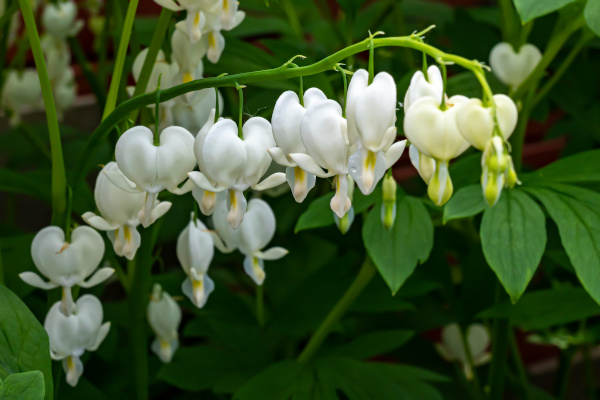
Zantedeschia is a genus of flowering plants from the family Araceae and is native to southern Africa. With a rich history dating back to the Ancient Romans, these deciduous or semi-evergreen perennials have been used as a symbol of celebration. Zantedeschia was Named after Professor Giovanni Zantedeschia, an Italian botanist.
There are two main forms of Zantedeschia: hardy and tender. Hardy forms of the plant can be grown outdoors, enjoy moist soil and full sun or partially shaded conditions - these are known as Arum lilies. Tender forms of Zantedeschia prefer being grown in containers or pots and should be brought inside over the winter - these are known as Calla lilies.
With tuberous flora in all colours from whites, yellows and oranges to deep reds and purples, Zantedeschias are not to be overlooked in any garden, as long as they have sufficient sunlight to grow in.
Ready to learn more about growing Zantedeschia? Read on for all there is to know...

Key Information
Soil pH
Position
Hardiness

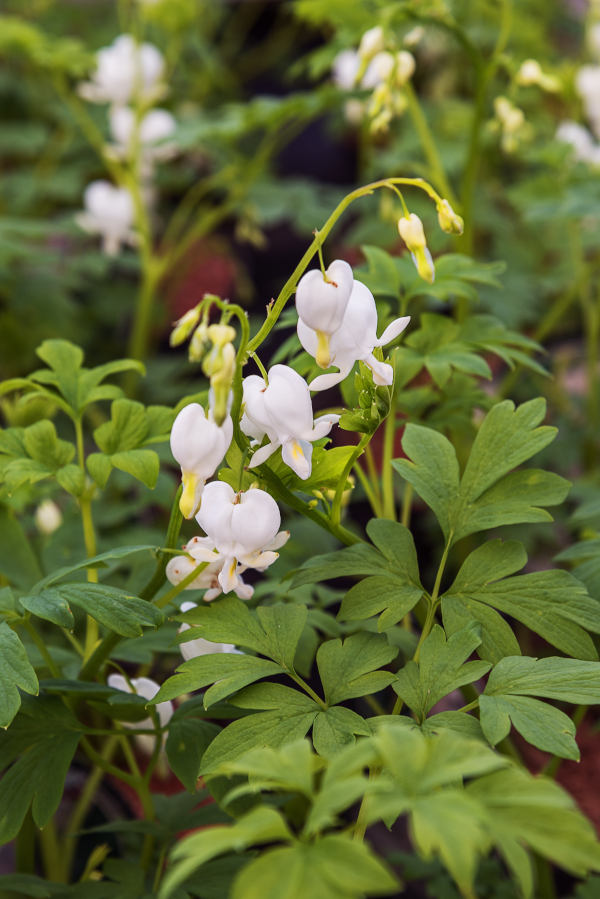
Here we list out the most popularly cultivated species and hybrids available in the U.K.
| Species | Common name |
HARDY – cold winter (H5/ -10°C to -15°C) Grow anywhere in the UK
| Dicentra canadensis | Squirrel-corn |
Dicentra cucullaria | Dutchman's-breeches | |
Dicentra eximia | Fringed bleeding heart | |
Dicentra formosa | Western or Pacific bleeding-heart |
Where & when to plant Dicentra
Position - Dappled Shade / Part Shade / Shade preferring Sheltered location.
Soil - Moist free drained humus-rich soil, slightly acidic to slightly alkaline and will grow in chalk, clay and loam.
Flower - Spring.
Dicentra can be planted all year around when purchased grown in pots. Bare rooted plants are best planted in late winter or very early spring when the ground is not frozen or waterlogged.
If container grown plants are planted out during the active summer growing season make sure that they are watered regularly until the plant has settled into its new location. Water at soil level rather than the foliage. Please note that Dicentra will go dormant in mid-summer. Foliage will collapse and die back to a tuber stored below soil level into the following spring. It is still suitable to plant dormant plants.
Whilst very hardy garden plants, Dicentra foliage can be nipped by late frosts. The plants will recover but it may effect its flowering performance. Avoid frost pocket locations or be prepared to cover in the evenings with horticultural fleece.
Dicentra are ideal in cottage garden schemes and make useful groundcover plants in borders.
How to plant Dicentra
- For planting in the garden, dig the soil area removing any large stones and weeds and breaking up any lumps. Mix in some organic matter, ideally leaf mould, though manure or garden compost are also fine. Rake level and firm with your heels. Rake level again.
- Water plants well and allow to drain before planting.
- A good tip is to dig a hole twice the size of the root-ball. Fill with water and allow to drain before placing in the plant which is especially good for summer plantings.
- Remove the plant from its pot placing the plant in the hole, ensuring the top of the root ball sits level with the surface of the soil. Too low and the plant may rot, too high and the roots can dry out. If bare root hold the plants crown at soil surface level allowing roots to dangle into the hole.
- Backfill with soil and firm in gently with your foot.
- Soak soil well with water.
- For planting in containers, first choose an appropriately sized pot around 5-7cm larger than the rootball of your plant (you’ll need to gradually increase the pot size every few years). Always ensure there are plenty of drainage holes in the bottom.
- Use a good quality potting compost if you have it and mix with garden soil. Mix in some horticultural grit and, if not already present (check the labelling on the bag) some slow-release fertiliser granules.
- Start by partially filling the pot with compost; enough so that when placed on it the upper surface of the root ball is about 3cm lower than the top of the pot.
- Fill around the plant with compost, firming down with your fingers then adding a little more so it is held tight.
- Pick up the container and lightly tap on the potting bench or ground a few times to help further settle the compost around the plant.
- Soak well with water.
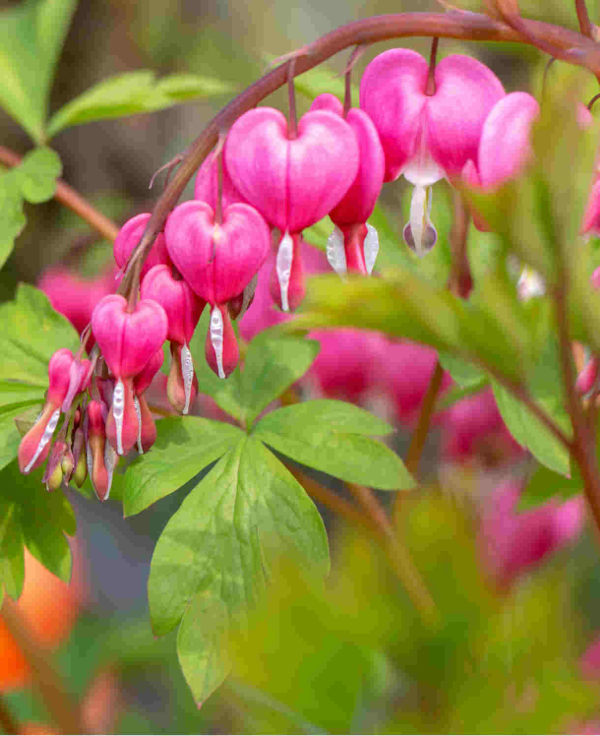
What to plant with Dicentra
Outdoors, plant alongside plants with different shaped or coloured foliage as a contrast whilst also making sure nearby plants have interest when dicentra are dormant.
Try Alstroemeria, Ceanothus, Clematis, Delphinium, Ferns and Grasses, Hardy Geranium, Roses, Pansy, Tulip, Narcissus (Daffodil) and Viburnum.
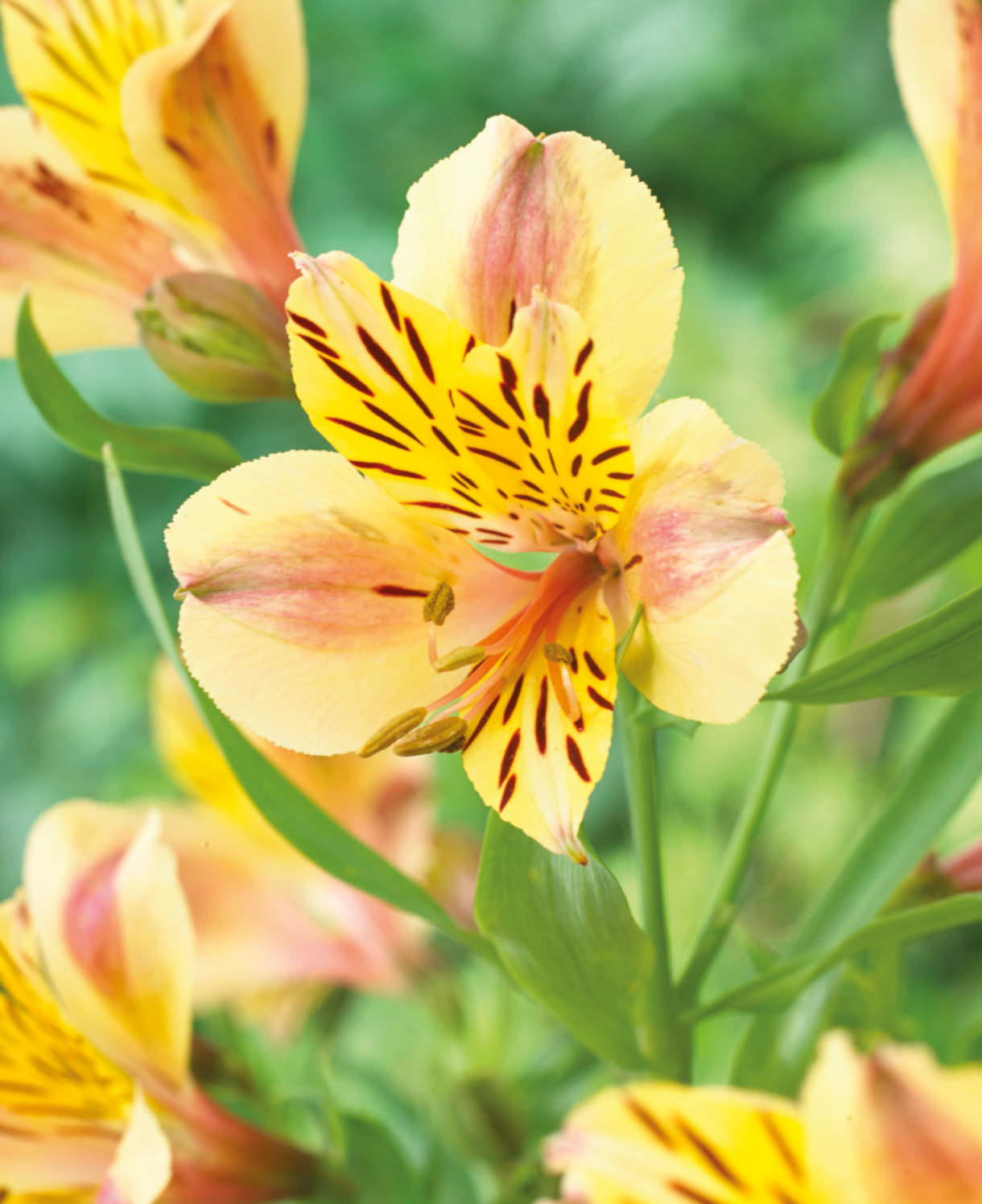
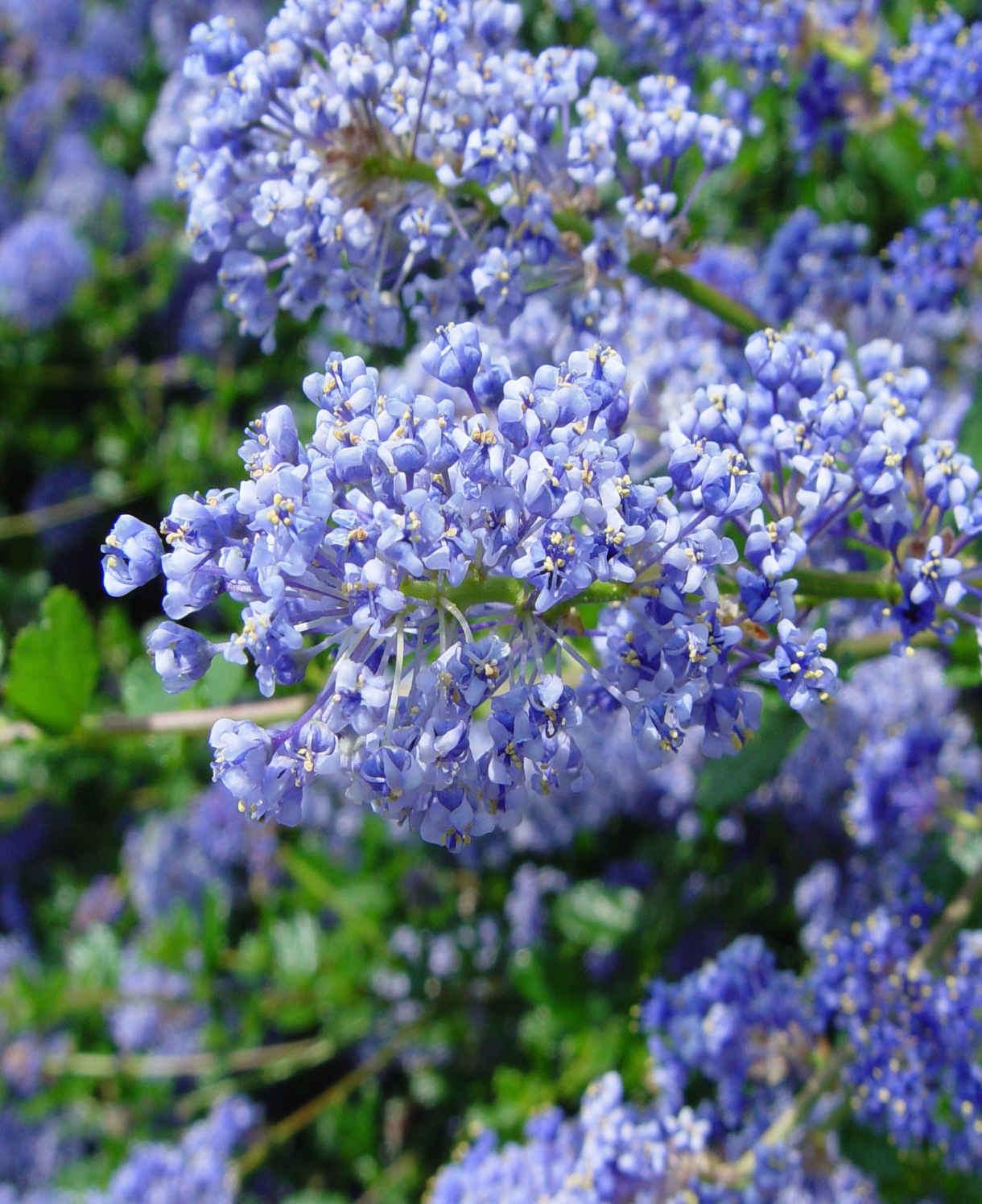
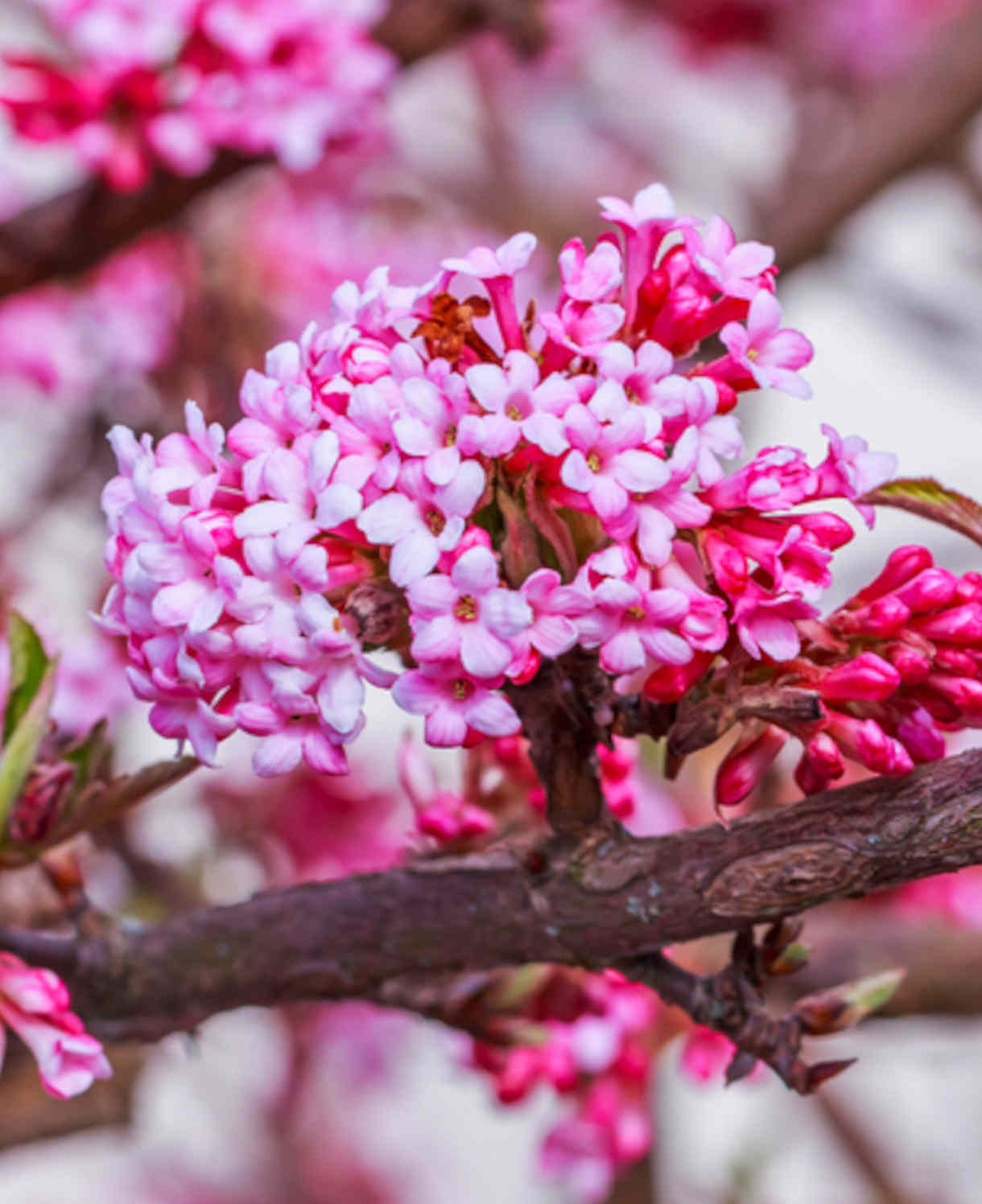
How to care for Dicentra
Pruning and Deadheading
Dicentra needs no pruning or deadheading. Simply when finished its growing season in early summer gently tidy away decaying growth in autumn.
Watering
Preferring moist humous rich, free drained sites especially if in a bright sunny location. Water as required.
On planting outside, they benefit from a good watering in on planting and then regular soakings until established. After this they should need watering only in very hot, dry conditions. Allowing the top few centimetres to dry out between soakings is a good rule of thumb to avoid overwatering. To check this, wiggle your finger down into the soil until you hit a cool, damp bit.
Feeding
On healthy, fertile soil, a mulch of well-rotted organic matter (i.e., a layer of leaf mould, manure, or garden compost applied to the soil around the plant) should provide enough nutrients for your dicentra. This has the added benefit of suppressing weeds and locking in moisture. Mulch when planting, and then again each spring.
If you garden on poor soil or your dicentra looks in need of a boost, applying a granular general purpose feed to the surface of the soil and lightly working in can reap benefits. This is known as a top dress and should be done when you’re mulching in spring – first apply the feed, then cover with the mulch.
Container-grown plants are different as they rely solely on the gardener for nutrition. Get off to a flying start by making sure you use a good quality compost with slow-release granules mixed in. These generally provide nutrients for around 6 to 8 weeks, after which you’ll need to apply a liquid feed every 2-3 weeks until the end of the growing season (i.e., September-ish).
Remember to repot your dicentra every few years into a slightly larger pot using fresh compost. In-between, it’s worth removing the top few centimetres of compost each spring and replacing with a fresh mix of compost and slow-release granules.
Cold Protection
Dicentra are hardy garden plants and should not need any winter protection. Other than ensuring they are not left sitting in water for long periods of time. If container grown ensure water can get away from the base of container by using pot feet.
Pests and Diseases
Dicentra are generally pest free. Protect against slugs and snails and rodents may be partial to a piece of root in winter when very hungry.
How to propagate Dicentra
The recommended way to propagate dicentra by root division.
When your plant is at least 3 years old and has been growing well in the previous season you should be able to divide the root structure into more plants.
Dicentras are spring flowering so require division in June to August
- Make sure the plant is not suffering from drought, pest or disease. Wait until the growth has begun to die down in summer.
- Lift plants carefully by digging all around its crown with a fork.
- Shake off excess soil so you can clearly see the roots.
- With a sharp clean knife portion the root into 2 or 3 sections.
- Either replant the bare root back into the position in the garden as described in Planting in the Garden section or plant root sections into a 1 litre pot as per the instructions for planting into a container
- Water well and leave.
- The dicentra should show signs of life in the following spring.
You can also sow seeds of Dicentra.
- Fill seed tray with good quality seed compost. Level and firm with the base of another seed tray. Water well.
- Carefully scatter the seeds across the compost surface of the tray
- Cover the seed to their own depth with sand or grit.
- Cover tray with a sheet of glass or cling film to keep humidity within the sowing area.
- Place the seed tray in a light sheltered area at 15-20o Check a couple of times a week for signs of life and to ensure the compost is still moist and not saturated. Germination may take 2-3 months or even wait til spring. Protect against pests such as slugs, and mice.
- Once visible signs of growth can be seen begin hardening off the seedlings by removing glass or cling film for longer periods to allow ventilation. Start from 15 minutes and slowly work up to total removal over a couple of weeks. Protect seedlings from winter and spring weather extremes.
- Once seedlings are large enough to handle they can be pricked out individually and grown on.
* Many plants carry Plant Breeders Rights and cannot be propagated for commercial purposes.
Common Dicentra questions
Do western bleeding hearts spread?
Dependant upon variety but a spread of 30cm to 1m could be achieved.
Do western bleeding hearts come back every year?
Yes dicentra are herbaceous perennials. In spring they grow, flower and become fully dormant by autumn ready for regrowth the following spring.
Where is the best place to plant a western bleeding heart?
In dappled sun to shady location with moist yet free drained soil.
Do birds like bleeding heart?
In the U.K. Dicentra has no specific value to birds.
